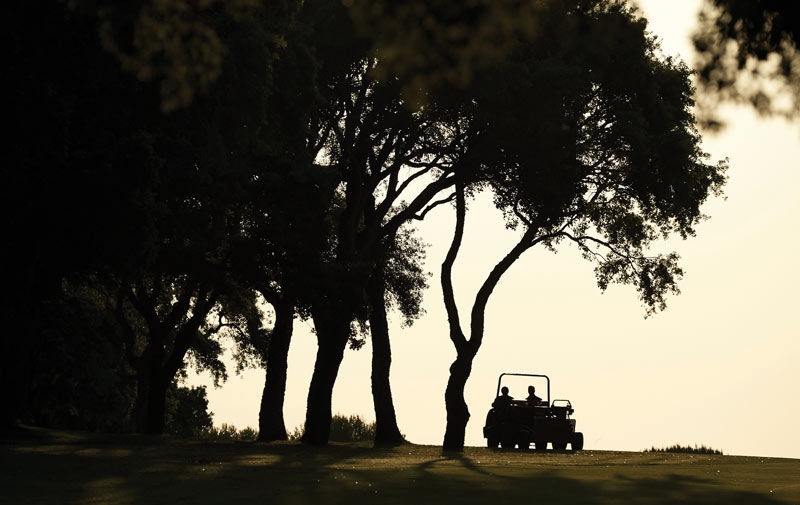
Some seemingly desirable tree maintenance practices can severely damage the health of these prominent, multipurpose golfscape features. Photo by Paul Severn
There are as many good tree care practices as there are ones to be avoided. The elimination of co-dominant leaders, timely pest control and crown cleaning are among the good ones, while elevations, lion’s tailing and topping are on the bad list. This article outlines what to pursue in the upkeep of trees on your golf course, and what to steer clear of.
Golf course tree care: The good stuff
Proper planting and preventive care can go a long way toward reducing the future incidence of tree maladies. Unfortunately, even under the best of circumstances, trees don’t develop without problems — problems of structure, problems of growth habit, and problems arising from previously ill-advised interventions. Fortunately, many of these issues can be improved with good arboricultural practices. These are the “slam-dunk” actions of tree maintenance.
Elimination of co-dominant leaders
Co-dominant leaders are problematic in a shade tree. As each of the closely spaced limbs develops, they begin to push on each other, crushing the tissues that transport water and nutrients throughout the tree. The compressed stems are also a point of structural weakness, increasing the likelihood of branch failure. If pruned before the stems touch, the damage is greatly minimized, leaving only a small surface wound for the tree to close.
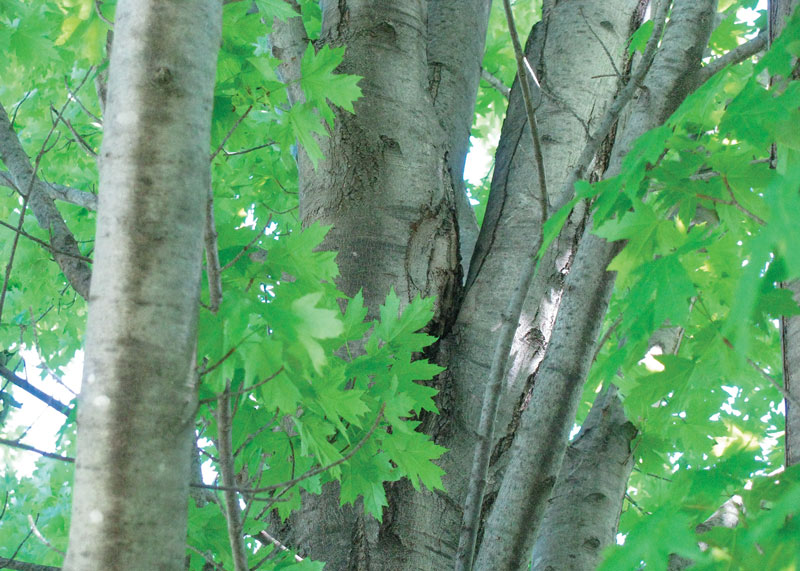
Photos by John Fech
Crown cleaning
Removal of limbs that partially or completely break off as a result of storms; limbs that are growing at a poor angle to the trunk or larger limbs; and limbs that rub excessively on each other is desirable. Once removed, these cease to pose a threat to people or valuable property nearby.
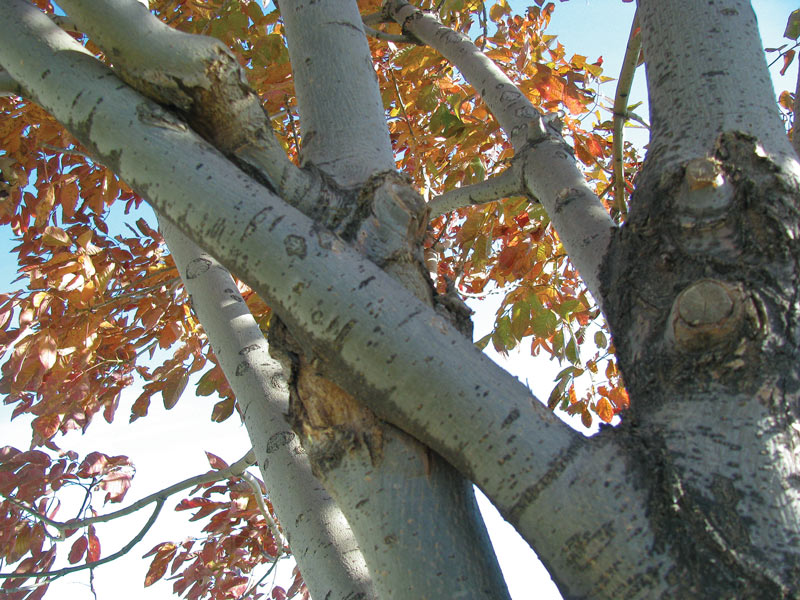
Elimination of extended branches
Branches that extend over a valuable entity without providing any significant benefit should be removed at the trunk or back to a properly located scaffold branch. Greens, tees, restrooms and concession stands are good examples of locations where long, out-of-scale branches are a concern.
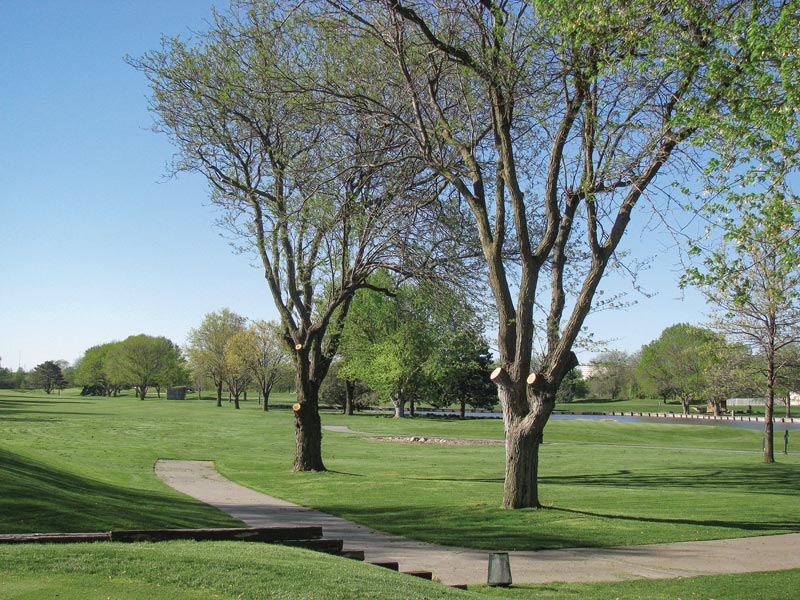
Regular scouting
Just like routine dollar spot inspections, frequent and timely monitoring for pests and abiotic maladies should be a part of a tree health care program in the golfscape. Regardless of the approach — either assigning a maintenance crew member to scout weekly and following up with a tree care professional, or hiring an International Society of Arboriculture-certified arborist to visit the course regularly — scouting is an important part of problem prevention.
Timely pest control
Implementation of the arborist or consultant’s proposed control measures, both curative and preventive, constitutes a large return on investment. Avoiding or delaying will almost always create a bigger and more complex problem in the future.
Golf course tree care: The bad stuff
Implementing the following will put a superintendent on Santa’s “naughty list.” Simply put, these actions are to be avoided.
Elevations
Cutting off most or all of the lower limbs of the tree canopy has many negative consequences, including creating large wounds that will probably never close; removing a large percentage of the tree’s carbon storage and photosynthetic potential; and reducing the tree’s capacity to diffuse the energy of a wind storm.
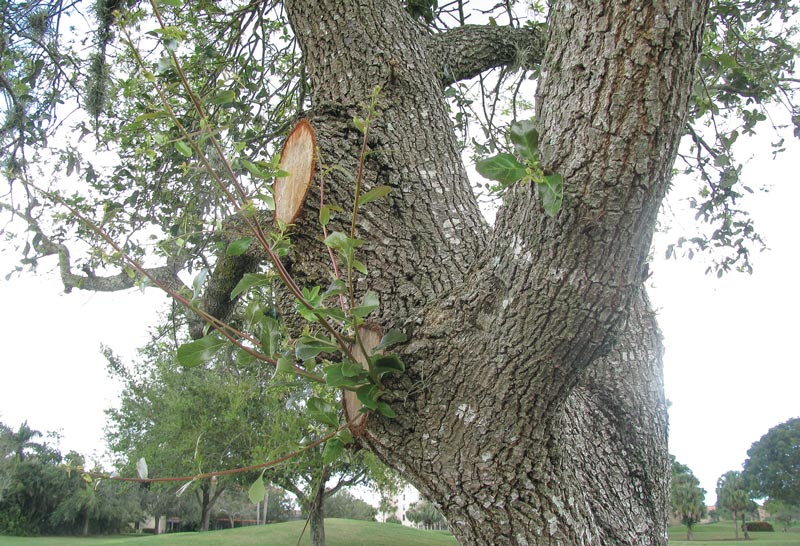
Lion’s tailing
Removing small inner stems on a long branch, usually in an attempt to increase sunlight on the turf surface, results in a greater likelihood of branch failure as well as the reduction in photosynthetic potential and carbon storage mentioned with elevations. (Editor’s note: The practice gets its name because tree branches will appear long and thin with a “puff” of foliage at the end, resembling a lion’s tail.)
Topping
Removing the terminal sections of all limbs in the top of the canopy, most often out of a desire to keep the tree at a certain height, is severely damaging to the health of a tree. Not only does it create a large number of wounds that likely won’t close and that will create great potential for the advancement of decay, it redirects all future growth into the lateral buds of the branch tissue that remains, both axillary and imbedded buds. Weak and unwieldy growth is the result.
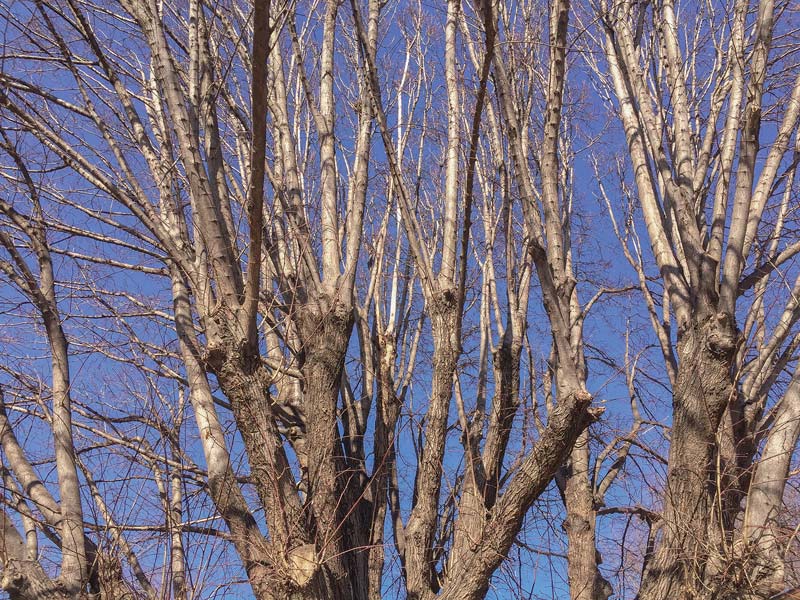
Poor pruning timing
Pruning is best done when the tree is able to recover from the injury. For shade trees, early to mid-spring is best so they have the rest of the growing season to develop callus tissue and close the wounds. Pruning in fall or early winter prevents rapid wound closure and facilitates desiccation of the cut surfaces.
Poor pest control timing
Control applications made after an insect population is at its peak and disease infestations are fully raging are usually not effective. Each pest is different, and it’s important to make applications at a pest’s most vulnerable stage.
Editor’s note: Dealing with tree pests or disease? Removing trees from your course? GCM’s collection of “tree-sources” can help.
Pest control applications based on tree reputation, not pest presence
Certain trees are either properly or unjustifiably associated with a particular pest, such as crabapples and Platanus species. Scouting and having an awareness of species cultivar susceptibility are the keys to success, not hearsay.
The ‘maybes’ of golf course tree maintenance
The procedures described in the above sections are clear-cut, either recommended or not recommended. There is another category of tree care practices that are “maybes.” Each of these has the potential to improve a tree’s health or stabilization in the short run; however, they fall into the sometimes yes/sometimes no camp — in other words, it depends. Each should be investigated for the potential for benefit, but not necessarily counted on.
Cabling/bracing
Installing a rod or wire harness in a tree to stabilize two or more branches will often work quite well in the short run, but this practice is best for preventing failure for a growing season or two until removal can be accomplished.

Fertilization
Trees need nutrients, just like turf — however, usually at a lower rate and frequency of application. In fact, if a tree is located where its roots intermingle with those of regularly fertilized turf, it’s usually best to avoid additional fertilizer for the tree. Soil tests, growth patterns, leaf symptoms and arborist recommendations are good factors to consider.
Plant growth regulators
Just as for turf, plant growth regulators have the potential to increase tree root mass, suppress excessive growth, and retain carbohydrates and sugars for future use. On the negative side, they often lower a tree’s capacity to resist pests and abiotic stressors.
Air spading
A relatively new procedure, air spading involves recreating the soil structure in the upper 6 to 12 inches of soil. The potential positive results are a decrease in soil compaction and an increase in oxygen levels, which may invigorate the root system. In certain situations, these benefits are not realized, and the tree can become destabilized.
Dedicated irrigation
Like fertilization, specific dedicated irrigation systems for trees on a golf course are highly site-dependent. If a tree is a “stand-alone” specimen, receiving little or no water from sprinkler heads that irrigate turf, then supplemental irrigation can be highly beneficial. In all cases, probing the soil throughout the tree’s root spread to determine soil moisture in the zero- to 2-inch range will help determine the need.
Shade-reduction cuts
Removing certain limbs to reduce the shade cast on an important turf area is usually beneficial in the short run but problematic in the long run. The effects usually last only one or two years, and a high degree of damage can be inflicted in the process. When considering shade-reduction cuts, it’s equally important to consider complete tree removal.
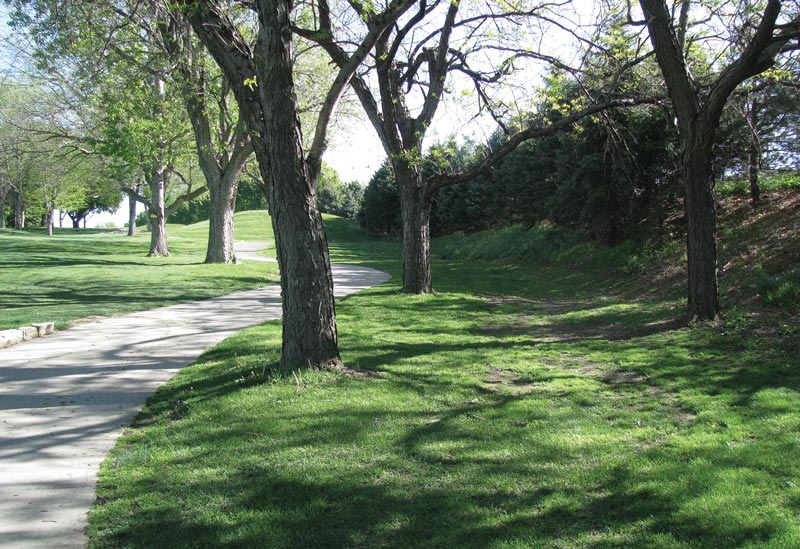
Factors that could necessitate tree removal
If the following problems — which are typically a “watch it over time” set of maladies — become sufficiently advanced, tree removal might be the best action step. This category of tree problems underscores the need for scouting and monitoring.
Cracks
Cracks are a separation of the bark, softwood and sometimes heartwood. Depending on the degree and location of the crack, tree removal may be necessary because of an increased risk of tree failure.

Editor’s note: Have a troubled tree on your hands? Before you take action, you need a diagnosis. A certified arborist guides you through the process of determining just what’s befallen an ailing tree in Triage for trees.
Leaning
When a tree trunk changes from vertical to angled above ground, one of two things has happened: The tree is producing a phototropic response, where the tree is stretching for the light; or the tree’s roots have disconnected from the soil particles, and the weight of the tree is causing it to slide to nonvertical. Phototropic responses are generally not problematic, whereas soil-particle disconnection is problematic, usually calling for immediate tree removal.
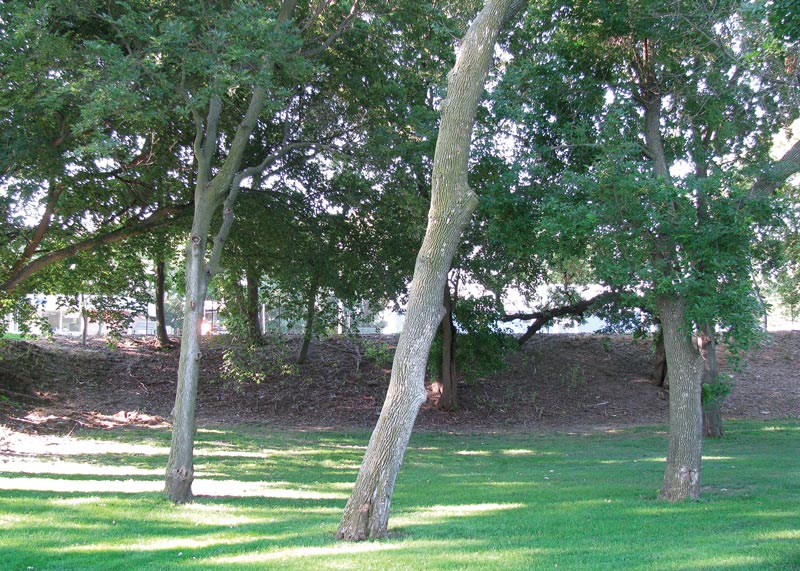
Extensive decay
Decay is present in nearly every tree, but when it is extensive, a tree’s structural integrity is compromised. When decay is suspected, a qualified arborist’s opinion is needed.

Included bark
When one branch has enveloped another, a pocket of weakness has developed. Just how weak is difficult to determine, yet it is a defect to watch.
Deep planting
A tree that lacks a flare or widening at the base is often symptomatic of a tree that has been planted too deeply. When this occurs, lateral roots often lack the capacity to stabilize the tree and also may have insufficient access to soil oxygen.
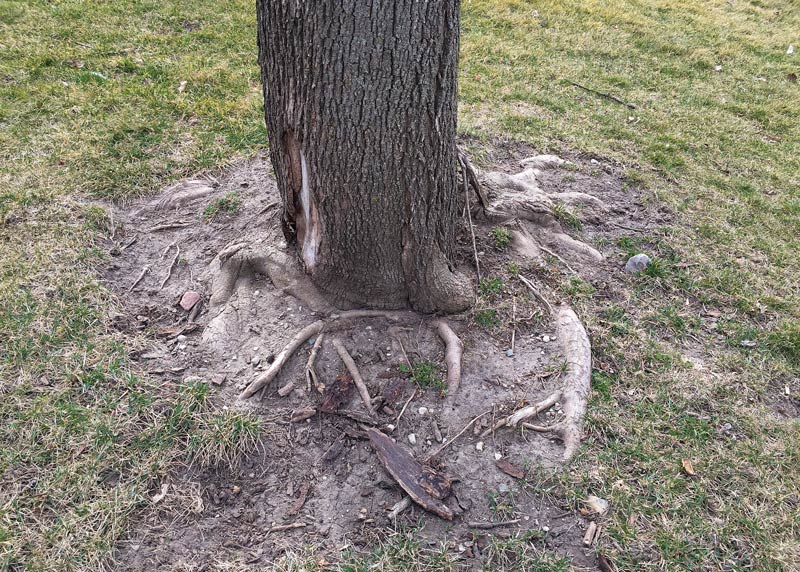
Stem girdling roots
Under ideal circumstances, roots develop in an arrangement like spokes on a bicycle wheel. Sometimes, however, one or more of them encircles the trunk, creating included bark, which may limit translocation of nutrients sufficiently to cause tree decline.
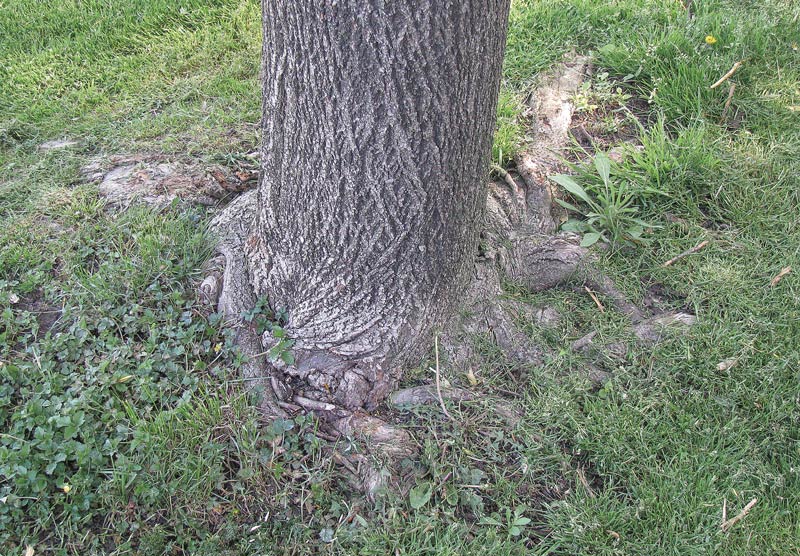
Forever maladies
Iron chlorosis and Japanese beetles are examples of influences that usually do not decrease in severity over time. In many situations, removal rather than treatment is the best approach.
How to spot tree troubles on the golf course
Regardless of which category a particular malady falls into, the techniques for taking a good first look are the same. It should begin with a 360-degree walk around the trunk that’s repeated at the drip line and then done a third time at twice the distance of the branch spread.
While tools such as binoculars, a sounding mallet, stiff rod for probing, chisel for probing, long screwdriver, sod spade/shovel and rake for removing mulch are helpful in observing specific signs and symptoms, perhaps the best “helper” is a trained set of eyes and a routine for regular tree inspections.
The other most important technique in identifying a potential problem is the same one counterfeit currency detectors use: They become so familiar with what legitimate currency looks like that when they spot a difference in the appearance, they know it might be a fake and need to investigate further, possibly asking for assistance. The same is true for tree malady inspection. For example, if a tree is supposed to have smooth bark, but flaking or exfoliating bark is observed, then the tree may be undesirably influenced.
Call in a tree care pro
If scouting has identified a particular concern, it’s wise to contact a savvy tree care professional. (Get tips for finding just such a person in Tree care: In good company.) Just like superintendents, arborists earn credentials. This can occur on a local or state level in the form of a certification, or on a regional or national level with a professional organization such as the International Society of Arboriculture. Many arborists hold several certifications or qualifications, such as the Tree Risk Assessment Qualification and utility/municipal/climber specialization.
The key to success when working with these pros is to tell them what you’ve seen over the year or years; what has been done related to watering, fertilizing, pest control, soil modification and cultivation; and about any recent intervention attempts. This type of information and intentional communication will help tremendously with their capacity to improve individual and overall tree health in the golfscape.
John C. Fech is a horticulturist and Extension educator with the University of Nebraska-Lincoln. He is a frequent and award-winning contributor to GCM.